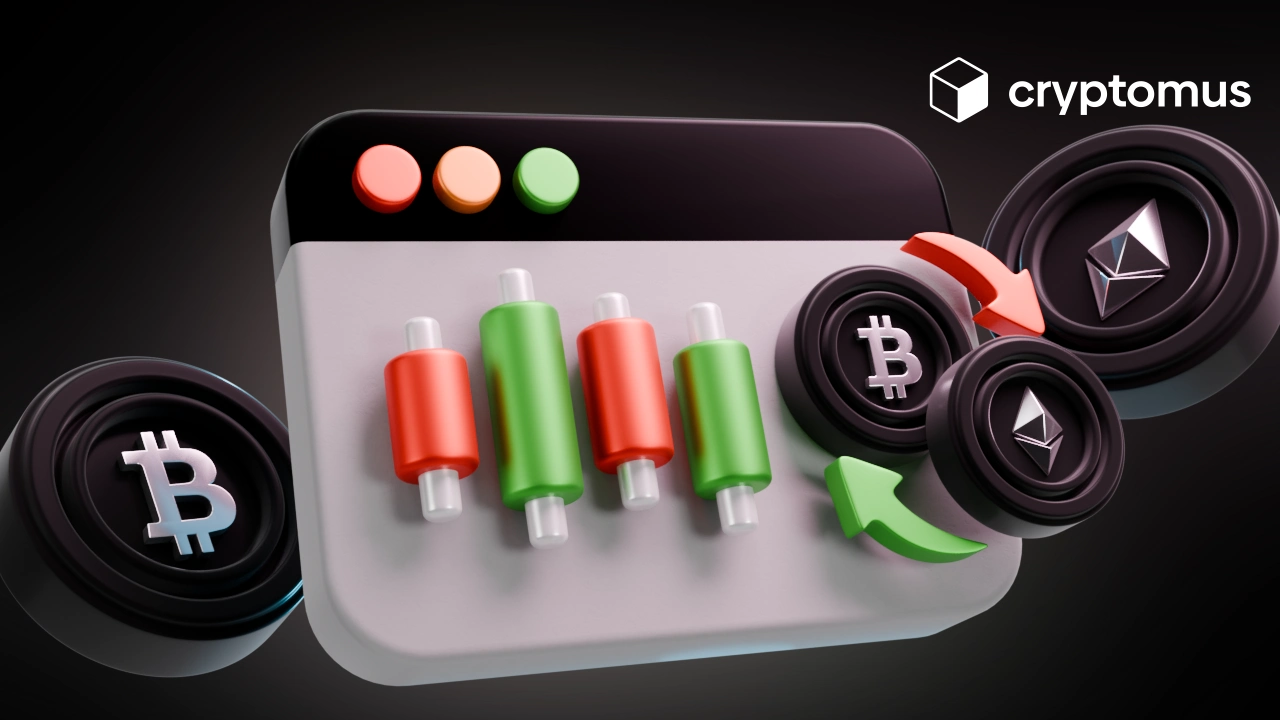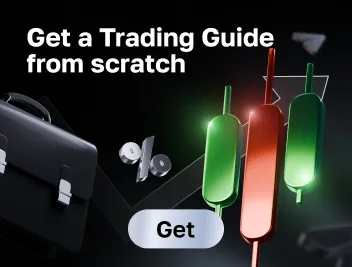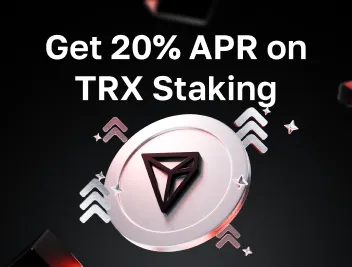
What Is A Spot Trading In Cryptocurrency
Spot trading refers to the purchase or sale of financial instruments, such as currencies, commodities, or securities, for immediate delivery and settlement. Today we’ll cover the topic of spot trading within the cryptocurrency market.
The Nature Of Spot Trading
Spot trading in cryptocurrency refers to the buying and selling of cryptocurrencies for immediate delivery and settlement. It’s a fundamental aspect of financial markets, enabling participants to transact in real time and adjust their positions based on market conditions. Here are key characteristics of spot trading:
-
Immediate settlement: transactions are executed instantly at the current market price (known as the spot price) and typically settled within a short period, usually within minutes or hours.
-
Direct ownership: when you buy cryptocurrency through spot trading, you receive direct ownership of the asset. This means you can transfer it to a wallet, hold it, or sell it at a later time.
-
No leverage: spot trading generally does not involve leverage, meaning you need to pay the full amount of the asset you wish to purchase. This reduces the risk of margin calls but also limits potential profits.
-
Market participants: spot trading is popular among retail investors, traders, and even newbies who want to buy or sell cryptocurrencies without complex financial instruments.
-
Market prices: the prices in spot trading are determined by supply and demand dynamics in the market, and they can fluctuate rapidly due to various factors, including market sentiment, regulatory news, and technological developments.
-
Exchanges: spot trading is facilitated on various cryptocurrency exchanges, such as Binance, Coinbase, Kraken, and others, where users can create accounts to buy and sell cryptocurrencies directly.
-
Types of cryptocurrencies: spot trading can involve various cryptocurrencies, including Bitcoin (BTC), Ethereum (ETH), and numerous altcoins. Users can trade pairs, such as BTC/USD or ETH/BTC, depending on the exchange’s offerings.
-
Spot balance: the amount of cryptocurrency that a trader currently holds in the spot trading account. This balance represents the total quantity of digital assets available for immediate trading or withdrawal without any restrictions related to margin or derivatives.
-
Spot position: the actual ownership of a cryptocurrency asset that a trader holds in the spot trading account. It represents a trader's commitment to buying or selling a specific amount of a cryptocurrency for immediate settlement at the current market price (spot price).
Pros And Cons Of Spot Trading
We’ve prepared a table that outlines the advantages and disadvantages of spot trading, helping to provide a balanced perspective for potential traders or investors.
| Pros | Cons | |
|---|---|---|
| Immediate Settlement: | ConsPrice Volatility: | |
| Transactions are settled quickly, allowing for immediate ownership of the asset. | ConsPrices can fluctuate rapidly, leading to potential losses if the market moves unfavorably. | |
| Simplicity of using | ConsLack of Leverage | |
| Spot trading is straightforward and easy to understand, making it accessible for beginners. | ConsUnlike futures or margin trading, spot trading generally does not offer leverage, limiting potential gains. | |
| Transparency | ConsLiquidity Risks | |
| Spot prices reflect current market conditions, providing transparency in pricing. | ConsIn less liquid markets, large transactions can significantly impact prices. | |
| No Expiry Dates | ConsOpportunity Costs | |
| Unlike futures contracts, spot trades do not have expiration dates, allowing for flexibility in holding assets. | ConsFunds tied up in spot trades cannot be used elsewhere, potentially missing other investment opportunities. | |
| Physical Delivery Option | ConsMarket Hours | |
| Spot trading can involve physical delivery of commodities, which can be beneficial for certain businesses. | ConsSpot markets may have limited trading hours compared to other financial instruments, restricting trading opportunities. | |
| Wide Range of Trading Options | ConsMarket Sensitivity | |
| A variety of assets can be traded, including currencies, commodities, and stocks. | ConsSpot trading is sensitive to geopolitical events and economic data releases, which can affect prices dramatically. |
Spot Trading VS Futures Trading
Futures trading and spot trading are two distinct methods of crypto trading, each with its own characteristics, advantages, and disadvantages. Here's a detailed comparison:
General Definitions
- Spot trading involves the immediate purchase or sale of an asset, such as commodities, currencies, or securities, at the current market price (spot price). Settlement typically occurs within a short period (usually two business days).
- Futures trading involves entering into a contract to buy or sell an asset at a predetermined price at a specified future date. Futures contracts also can be used for various assets, including commodities, currencies, and financial indices.
Spot trading and futures trading: key differences:
| Type | Feature | |
|---|---|---|
| Spot Trading | Feature- Immediate settlement (T+2). - No contracts; transactions are completed instantly. - Based on the current market price (spot price). - Typically no leverage; full payment is required for transactions. - No expiration; trades are finalized right away. - Generally involves retail traders and businesses looking for immediate ownership. - Limited risk exposure to the actual position held. - May involve physical delivery of commodities or assets. - Sensitive to current market conditions and news. - Simpler and easier for beginners to understand and execute. | |
| Futures Trading | Feature- Settlement occurs at a future date specified in the contract. - Involves contracts that obligate the buyer to purchase and the seller to sell the underlying asset at the contract price. - Based on the agreed-upon price in the futures contract, which may differ from the spot price. - Leverage is often used, allowing traders to control larger positions with a smaller amount of capital. - Contracts have specific expiration dates, after which they become invalid. - Attracts speculators and hedgers, including institutional investors. - Can be used for hedging against price fluctuations or for speculative purposes. - Can involve physical delivery, but many contracts are settled in cash. - Sensitive to future market expectations, economic indicators, and geopolitical events. - More complex due to contract specifications, expiration dates, and leverage mechanisms. |
Ultimately, the choice between spot and futures trading depends on the trader's objectives, experience level, and risk tolerance.

How To Make Money On Spot Trading?
Spot trading indeed can be profitable. Below is a step-by-step guide to help you understand how to profit from spot trading.
-
Choose a reliable platform: select a platform that offers good liquidity, security and competitive fees, such as Cryptomus. It offers highly liquid assets like Bitcoin, Ethereum, Solana, and others, with low trading commissions (from 0.08% to 0.01% for makers and 0.1% to 0.04% for takers) and no deposit fees. The platform also features a functional mobile app and provides robust security measures, including 2FA and AML; thus, your experience of using the platform will be convenient and secure.
-
Set up your account: go through the verification process and deposit fiat currency or crypto into your trading account. Ensure the amount is sufficient for the trades you plan to make.
-
Analyze the market: evaluate the intrinsic value of a cryptocurrency by examining factors like market demand, development teams, and overall adoption. You can also choose to do technical analysis by using charts and indicators (like moving averages, RSI, MACD) to predict future price movements based on past market data.
-
Use risk management techniques: begin with a small investment until you become more confident and experienced. Don’t put all your money into one asset. Spread your investments across several assets to reduce risk. Set up a stop-loss order: it helps you minimize losses by automatically selling an asset when it drops to a certain price.
-
Choose a spot trading strategy:
- Buy low, sell high: this is the simplest strategy. Buy an asset when the price is low and sell it when the price increases.
- Dollar-cost averaging (DCA): invest a fixed amount at regular intervals regardless of the asset's price. This reduces the impact of market volatility and can result in a lower average entry price over time.
- Scalping: a high-frequency strategy where traders make small profits on numerous trades over short timeframes (minutes or seconds). Scalping requires constant monitoring and fast execution.
- Swing trading: this strategy involves holding assets for a few days or weeks to capitalize on expected upward or downward price trends.
-
Take profit at the right time: once your target profit has been reached, it's essential to lock in the profits. Don’t get greedy. Set a take-profit order, which automatically sells the asset at a predetermined price point to secure profits.
-
Stay informed: markets are constantly changing, so staying updated on the latest news is key to making smart trades. Factors such as regulatory changes, partnerships, market demand, and global economic events can greatly influence asset prices.
Common mistakes to avoid:
- FOMO (Fear of missing out): don’t buy an asset just because it’s surging in price; wait for a proper entry point.
- Overtrading: avoid excessive trading, especially when you’re uncertain of the market’s direction.
- Ignoring fees: be aware of trading fees, as they can eat into your profits, especially if you’re trading frequently.
By consistently following these strategies and applying risk management techniques, you increase your chances of making money through spot trading.
Tips For Making More Profit Of Spot Trading
For those who are interested in profiting even more of spot trading, we’ve prepared a list of useful tips:
-
Understand market fundamentals: stay informed about economic indicators, news events, and trends that can impact the asset prices you are trading. Use charts, patterns, and indicators to identify entry and exit points based on historical price movements.
-
Choose your assets wisely: trade a variety of assets (e.g., crypto, commodities, stocks) to spread risk and increase opportunities for profit. Trade in assets with high liquidity to ensure that you can enter and exit positions easily without significant price slippage.
-
Implement trading strategies:
- Scalping: take advantage of small price movements by executing multiple trades throughout the day to accumulate profits.
- Day trading: buy and sell assets within the same trading day to capitalize on short-term price movements.
- Swing trading: hold positions for several days to take advantage of price swings and trends.
-
Risk management: limit potential losses by placing stop-loss orders at predetermined price levels. Only invest a small percentage of your trading capital in any single trade to manage risk effectively.
-
Monitor your trades: keep track of your trades, analyze what works and what doesn’t, and adjust your strategies accordingly. Avoid emotional trading and stick to your plan, even in volatile market conditions.
-
Use trading tools and platforms: select a broker that offers a robust trading platform with low fees and good execution speed. Work with trading software and tools for analysis, alerts, and trade execution to stay ahead of market movements.
-
Educate yourself continuously: attend webinars, read books, and follow market experts to stay updated on new strategies and market developments.Engage with other traders to share insights, experiences, and tips.
-
Be patient and realistic: understand that profits may not come overnight and set achievable profit targets. Wait for the right trading opportunities rather than forcing trades.
Spot trading can be profitable if approached with a solid understanding of the market, a well-defined strategy, and effective risk management practices. By continuously educating yourself and refining your techniques, you can increase your chances of success in spot trading.
Did you find this article useful? What are your thoughts on spot trading? Share them with us in the comments down below!
Rate the article








comments
0
You must be logged in to post a comment